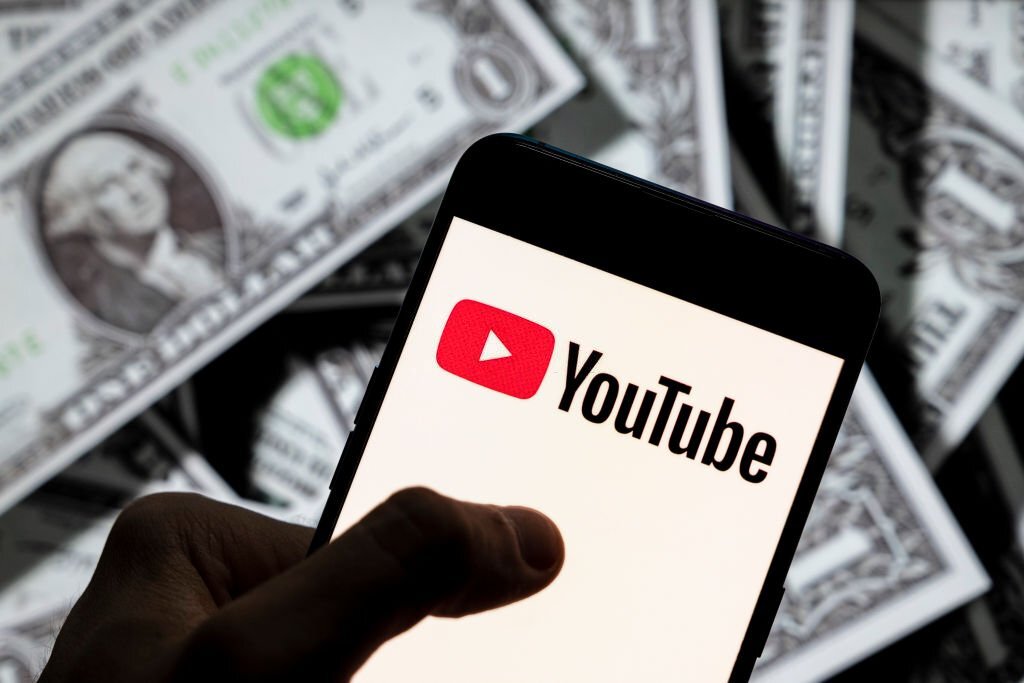YouTube, the giant video-sharing platform, has transformed how we consume content. With millions of creators and viewers worldwide, it seems unstoppable. However, behind the glitz and glamour, there's an intricate financial landscape that raises some eyebrows. Is YouTube truly thriving, or is it facing financial challenges? In this post, we'll dig into the current state of
Current Revenue Streams for YouTube

To understand YouTube's financial health, we need to explore its primary revenue sources. These streams are vital for the platform's growth and sustainability. Here’s a closer look at how YouTube generates income:
- Ad Revenue: The backbone of YouTube's earnings. Through targeted advertising, brands pay to promote their products on videos. In 2022, YouTube generated over $28 billion from ad revenue alone.
- YouTube Premium: This subscription service allows users to watch ad-free content, access exclusive shows, and enjoy offline viewing. As of early 2023, YouTube Premium reportedly had over 80 million subscribers, contributing significantly to the revenue.
- YouTube TV: Offering live TV streaming, this service has gained traction, especially among cord-cutters. It competes with traditional cable and has seen subscriptions steadily rise.
- Super Chat and Memberships: Creators leverage these features during live streams, allowing fans to engage more directly. This interaction can lead to substantial income for both creators and YouTube.
- Merchandising and Affiliate Marketing: Many creators promote products or merchandise directly. YouTube takes a cut of these sales, turning the platform into a marketplace.
Despite these robust revenue streams, YouTube faces challenges. Ad revenue can fluctuate based on economic conditions and advertiser budgets. For instance, during economic downturns, companies often cut back on advertising, which can directly impact YouTube's income.
Moreover, competition is intensifying. Platforms like TikTok and Twitch are capturing audience attention and advertising dollars. Creators are diversifying their content across multiple platforms, which could dilute YouTube's market share over time.
Interestingly, while YouTube's revenue appears strong, costs are rising as well. Content moderation, licensing agreements, and developing new features demand substantial investments. As a result, while revenue streams are diverse, profitability isn't guaranteed.
In conclusion, YouTube's financial landscape is complex and evolving. While current revenue streams are impressive, the platform must navigate challenges to maintain its leading position. Keeping an eye on these trends will be crucial for understanding whether YouTube is indeed facing financial challenges or if it will continue to thrive in the digital age.
Also Read This: Are ParrotX2 YouTube Videos Scripted? Unveiling the Truth Behind the Popular Channel
3. Analysis of YouTube's Advertising Revenue

YouTube has long been hailed as a giant in the online video space, primarily due to its robust advertising revenue model. However, recent trends indicate that this model may be facing some serious challenges. To understand the dynamics at play, let’s break it down.
First off, YouTube’s advertising revenue largely depends on two things: viewership and ad rates. While the platform still enjoys billions of views, competition has increased dramatically. Other social media platforms like TikTok and Instagram are capturing audience attention—and advertisers are following suit. This has led to a more fragmented advertising market, where brands are more selective about where to allocate their budgets.
The average CPM (cost per thousand impressions) on YouTube has also seen fluctuations. Many advertisers have reported a decline in ad rates due to oversaturation. As brands become more cautious in their spending, YouTube has had to adapt by offering more competitive pricing to keep advertisers on board. This has raised concerns about sustainability in a market where profit margins are tightening.
Moreover, YouTube's reliance on programmatic advertising has introduced additional complexities. While programmatic ads allow for targeted advertising, they also mean that YouTube has less control over the types of ads displayed, which can affect brand sentiment. If viewers frequently see irrelevant or low-quality ads, they may become less tolerant, impacting overall engagement.
Lastly, let’s talk about the regulatory landscape. Recent scrutiny over data privacy and the use of targeted advertising has put additional pressure on platforms like YouTube. Compliance with new regulations can incur higher costs, which directly impacts their bottom line. If advertisers are unable to track user behavior as effectively, they may pull back on spending, further exacerbating these financial challenges.
In summary, while YouTube’s advertising revenue has been a powerful driver of its growth, the landscape is changing. The competition is fiercer, ad rates are fluctuating, and regulatory challenges loom large. Could this be a sign that YouTube needs to rethink its advertising strategy?
Also Read This: How to Stop Buffering on YouTube for Smooth Streaming
4. Impact of Subscription Services on YouTube's Finances
With the rise of subscription services like YouTube Premium, many have wondered how this shift is affecting YouTube's financial health. Subscription models provide a different revenue stream compared to traditional advertising, and they come with their own set of advantages and challenges.
First, let’s highlight the positive aspects. YouTube Premium offers users an ad-free experience, which can be especially appealing to heavy users. This service not only generates direct revenue through subscriptions but also provides an incentive for content creators to produce high-quality material, knowing they can monetize through memberships. The allure of exclusive content, like YouTube Originals, also helps in attracting subscribers.
However, there are some caveats. While subscription services can provide consistent revenue, they often fall short of offsetting declines in advertising revenue. The subscription model typically requires a larger user base to make a significant financial impact. If the growth of subscribers stagnates, YouTube may face challenges in maintaining a balance between ad revenue and subscription income.
Moreover, the presence of multiple subscription services adds layers of complexity. Users often feel overwhelmed with choices—between YouTube Premium, Netflix, Hulu, and others, it becomes challenging for any single service to dominate. This competition can limit growth potential for YouTube Premium.
Interestingly, the subscription model can also change user behavior. With fewer ads, users may not engage with the platform in the same way. For instance, if they’re not exposed to as many ads, their preference for certain types of content may shift, potentially impacting what creators choose to produce. The ripple effects of this change could lead to a less diverse content landscape over time.
In conclusion, while YouTube's subscription services offer a promising alternative revenue stream, they are not a panacea for the financial challenges the platform faces. The interplay between advertising and subscription revenues will be crucial in determining YouTube’s financial future.
Also Read This: Exploring the GoAnimate YouTuber Movie and Its Popularity
5. Comparison with Competitors in the Video Streaming Market
YouTube has long been the giant in the video-sharing arena, but the landscape is shifting rapidly. Competitors like TikTok, Netflix, and Amazon Prime Video are not just nibbling at its heels; they are changing the way audiences consume video content altogether. How does YouTube stack up against these rising stars?
For starters, TikTok has captured the attention of Gen Z and Millennials with its short, snackable content format. Unlike traditional YouTube videos that often require more of a time investment, TikTok caters to a fast-paced lifestyle where users scroll through endless clips in minutes. This shift in viewing habits could lead to a dip in YouTube's advertising revenue as younger audiences gravitate toward platforms that offer quick entertainment.
Meanwhile, Netflix and Amazon Prime Video focus on high-quality, original programming, drawing in subscribers willing to pay for premium content. YouTube, with its user-generated content model, struggles to compete in this arena. While it does produce original shows, the mass appeal isn’t always there. Consider how Netflix has launched shows like “Stranger Things” and “The Crown”—these titles not only attract viewers but also keep them subscribed month after month.
To further illustrate the differences, let’s look at some key aspects:
- Monetization Strategies: YouTube relies heavily on ad revenue, whereas streaming services like Netflix have a subscription-based model that provides more predictable income.
- User Engagement: TikTok users spend an average of 52 minutes per day on the app, compared to about 40 minutes on YouTube. The engagement levels can heavily influence advertisers’ choices.
- Content Variety: While YouTube offers a diverse range of user-generated content, platforms like Netflix provide curated experiences that attract specific audience segments.
The competition is fierce, and while YouTube still boasts a massive user base, its traditional model may struggle to keep pace in an evolving market where consumer preferences are changing rapidly.
Also Read This: How to Change the Email Address Linked to Your YouTube Account
6. Factors Contributing to YouTube's Financial Struggles
Understanding why YouTube faces financial challenges requires digging into several key factors. Here are some of the primary contributors:
- Ad Revenue Dependency: YouTube's business model heavily relies on advertising. When advertisers cut back on spending, especially during economic downturns, YouTube feels the pinch. Recent reports indicate that some brands are reallocating budgets to more targeted platforms, leaving YouTube with less ad revenue.
- Increased Competition: As we mentioned earlier, the rise of platforms like TikTok and streaming services is drawing viewers and advertisers away from YouTube. This creates a challenging environment for maintaining revenue growth.
- Content Moderation Costs: YouTube invests significant resources into content moderation to comply with regulations and community standards. This increases operational costs, impacting profitability.
- Creator Monetization Issues: Many creators are struggling with monetization changes, which can lead to decreased content production. When creators feel they can’t earn a fair income through YouTube, they may switch to platforms that offer better monetization options, further reducing content diversity and viewer engagement.
In summary, while YouTube remains a dominant player in the video space, it's clear that several factors are contributing to its financial struggles. The combination of heavy reliance on ad revenue, fierce competition, rising operational costs, and creator dissatisfaction all play a role in the challenges it faces today.
Also Read This: How to Remove a YouTube Account: Managing Your Digital Footprint
7. Future Projections for YouTube's Financial Health
As we look ahead, the financial landscape for YouTube presents a mix of both challenges and opportunities. Analysts and industry experts are closely monitoring several factors that could influence YouTube's financial performance over the coming years.
1. Ad Revenue Trends: YouTube has been heavily reliant on advertising revenue, which, while still significant, faces pressure from economic fluctuations. For instance, during economic downturns, marketing budgets often shrink, leading to decreased ad spend. If trends continue, YouTube may need to diversify its revenue streams beyond just ads to maintain growth.
2. Subscription Growth: With the rise of platforms like YouTube Premium and YouTube TV, subscription services are becoming a vital component of YouTube's financial model. If YouTube can successfully convert more free users to paid subscribers, this could significantly bolster its financial health. Recent reports suggest that YouTube Premium has seen steady growth, which could bode well for future revenues.
3. Competition: The streaming landscape is becoming increasingly crowded, with competitors like TikTok, Twitch, and even traditional streaming services vying for audience attention. YouTube's ability to innovate and retain its creator community will be crucial. If content creators feel that they can earn better revenue elsewhere, this could impact YouTube's overall viewership and, consequently, its revenue.
4. Investment in Technology: YouTube is continually investing in technology to enhance user experience and improve ad targeting. Features like enhanced analytics for creators and better algorithmic recommendations can keep users engaged. If these investments pay off in terms of user retention and ad effectiveness, YouTube may see a positive shift in its financial trajectory.
5. Regulatory Challenges: Potential regulatory actions concerning data privacy and advertising practices could also impact YouTube's financial health. Companies are increasingly facing scrutiny, and compliance could lead to increased costs. How YouTube navigates these challenges will be key to its financial sustainability.
In conclusion, while YouTube faces a blend of challenges, its ability to adapt and innovate will be pivotal in shaping its financial future. The next few years will be crucial as it seeks to balance ad revenue dependence with growing subscription services while navigating an ever-evolving competitive landscape.
8. Conclusion: What Lies Ahead for YouTube's Financial Future
So, what does the future hold for YouTube? It’s a question that sparks debate among industry insiders and casual observers alike. With the platform's extensive user base and vast library of content, one could argue that YouTube is in a strong position. However, the challenges it faces cannot be ignored.
Adapting to Market Changes: As consumer preferences shift, YouTube's agility in responding to market changes will dictate its financial success. The platform's history of adapting—whether through launching new features or expanding into new content formats—will be crucial. For example, the rise of short-form content has prompted YouTube to introduce Shorts, aiming to capture the attention of users who prefer quick, bite-sized videos.
Financial Diversification: To mitigate the risks associated with ad revenue volatility, YouTube may need to accelerate its diversification efforts. This could include enhancing its merchandise offerings, expanding live-streaming capabilities, or even creating exclusive content partnerships that attract new audiences.
Community Engagement: Furthermore, YouTube's relationship with its creators will play a significant role in its financial trajectory. By fostering a supportive environment for creators, YouTube can ensure a steady stream of fresh content, which in turn attracts viewers and advertisers. Initiatives that support creators financially, such as the YouTube Partner Program, are essential to maintaining this ecosystem.
In summary, while YouTube faces financial challenges ahead, its potential for innovation, market adaptation, and community engagement offers a glimmer of hope. The path forward will require a balanced approach, navigating the complexities of both the digital ad landscape and the changing preferences of its users. It’s an exciting yet uncertain time for YouTube, and how it manages these dynamics will determine if it continues to thrive or faces a more challenging financial future.
 admin
admin








